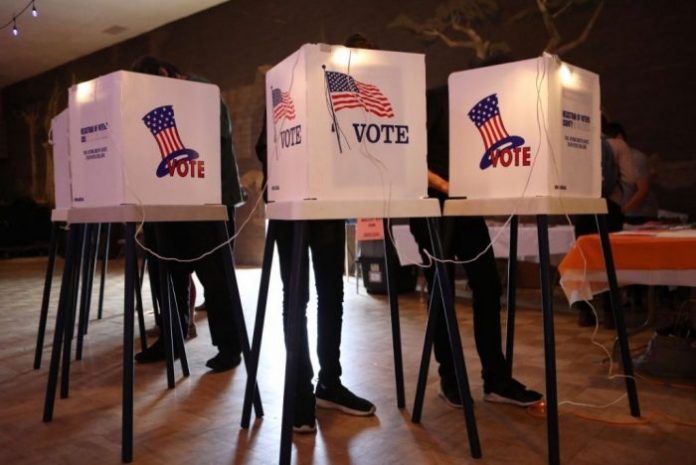NIKI KELLY, INDIANA CAPITAL CHRONICLE
It’s no secret that Indiana’s voting performance is abysmal. Hoosiers have no problem registering to vote but often don’t make it to the polls.
That’s why I was intrigued by a meeting on two election proposals — moving municipal elections to even-numbered years and expanding vote centers to all counties — held in Indianapolis last week.
Lawmakers mandated that Indiana Secretary of State Diego Morales host a series of meetings on the ideas and provide a report for possible action in the 2026 legislative session.
Increasing voter turnout should be everyone’s goal. To me, the vote center proposal is an easy yes.
Instead of having dozens of precinct locations scattered across a county with voters assigned to only one, officials set up a handful of large locations that anyone can use regardless of where they live.

The model is used in 67 of Indiana’s 92 counties. It costs less and requires less staffing. The latter is important as many longtime poll workers age and can no longer volunteer.
Boone County, where I live, moved to vote centers in 2014. It was a smooth transition and has been a welcome change. I have voted in Lebanon on my way to the grocery store or in Whitestown on my way to work. I’m not pinned to only one location — I can fit voting within my day more easily.
I have never waited more than 15 minutes. Counties still need to provide enough machines to avoid long lines, though, and they shouldn’t skimp and set up too few vote centers.
Indiana law requires at least one vote center location per 10,000 voters but I consider that a minimum and believe officials should plan for more than that.
Allen County is the largest that doesn’t use vote centers, but officials there are in discussions to change that. They have 110 polling locations, which would be consolidated into 53 — or one for every 5,000 voters.
A vote is planned for Sept. 15 and must be unanimous.
The second proposal Morales is studying isn’t ready for prime time: moving municipal elections to even-numbered years alongside major races such as president, the U.S. House and Senate, governor, other statewide offices and the Indiana House and Senate.
The data is clear that turnout is much lower in municipal races.
In 2023, for example, turnout in Indiana’s municipal elections was about 27% statewide. That compared with roughly 42% voter participation in the 2022 midterm elections and 61% in the 2020 presidential election.
But that isn’t the whole picture.
Right now, your mayoral race or city council contests are the focus of that election cycle. Candidates, news media and voters can focus on local issues, from growth strategies and road funding to zoning issues and crime.
But if you add those to an already busy ballot, those races will be buried behind federal and state politics. If voters make it all the way through those races — and that’s a big if — they will be without the benefit of a sustained and direct season focusing only on local matters.
Local races in recent years have gained real importance, whether it be related to controversial data centers or solar panel farms. People are paying attention, and I would hate to see that jeopardized.
While those are the only two proposals under consideration, I did want to mention a few other election changes that have been passed in other states to make elections more efficient and flexible for voters.
- Extended voting hours. Indiana’s polls are open from 6 a.m. to 6 p.m. on Election Day and I think that’s plenty. Especially since Hoosiers have four weeks beforehand to cast an early vote in person at the county courthouse or other satellite location, there is plenty of time for people to vote.
- Same-day registration. Indiana had 4.8 million registered voters for the 2024 general election, while the state has a total population 0f 6.9 milliion. And of course, some residents aren’t old enough to vote. I personally don’t think registration is issue. The problem is getting people to the polls. This change would be a heavy lift for no real improvement.
- Ranked-choice voting. Some jurisdictions are adopting this and have seen turnout increases of between five and seven percentage points. This option allows voters to rank candidates for an office in order of their preference. If a candidate receives more than half of the first choices, that candidate wins, just like in any other election. However, if there is no majority winner after counting the first choices, the race is decided by an instant runoff. The candidate with the fewest votes is eliminated, and voters who ranked that candidate as their first choice will have their votes count for their next choice. This process continues until a majority winner, a candidate with more than half of the vote, wins. It’s complicated and I don’t think Hoosiers are ready for it.
I wish I knew the answer to getting more voters to go to the polls. I understand frustration over House and Senate districts, which people may feel are predetermined by gerrymandered maps.
But most races are statewide and local, where every vote absolutely cou





